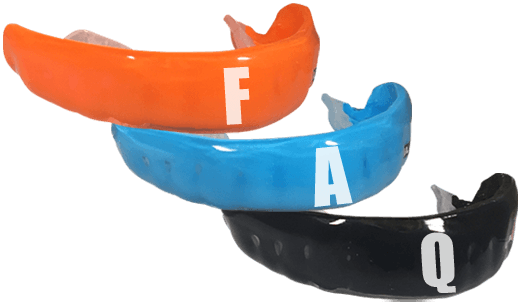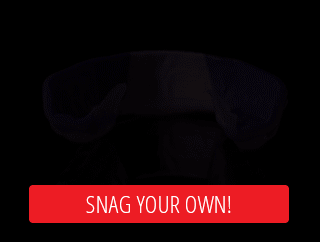Everything You’ve Wanted To Know About Mouthguards, But Were Afraid To Ask

You’ve got mouthguard questions. We’ve got mouthguard answers:
1. How Do I Choose The Right Mouthguard?
The right mouthguard for you actually depends on the sport you play. Each sport demands a different level of protection, and some sports and leagues even have specific mouthguard rules and requirements.
Oftentimes, the proper mouthguard for your sport simply comes down to one question: do you wear a facial shield? For sports where full facial protection is worn — like ice hockey, football or men’s lacrosse — you want a mouthguard with a thinner frontal profile with added protection against upper and lower jaw collisions, due to the body contact in the sport. Athletes in non-contact sports like soccer and basketball actually need more protection. Because the face is bare in these sports, you want a mouthguard that features more protection in the front, protecting against heads and elbows.
2. How Do I Clean My Mouthguard?
Here are some simple rules for cleaning your mouthguard:
- Rinse your mouthguard with water before and after each use
- Only clean it with a denture cleaner or an effervescent cleaner
- Never use toothpaste, a toothbrush or mouthwash to clean it — they cause damage
- Keep your mouthguard in its case, and clean the case often
- Don’t chew on it!
3. Any Mouthguard Counts As Approved Protection, Right?
Both the American Dental Association and the Academy for Sports Dentistry recommend a professionally made, properly fitted custom mouthguard for all contact and collision sports.
In addition, the National Athletic Trainers’ Association recently released a new position statement on dental injuries, including recommendations for both mouthguard effectiveness and care. They encourage athletes to wear “properly fitted mouthguards during sports activities,” which they define as being fabricated over a stone model from an impression and featuring adequate thickness in all areas.
4. How Do I Avoid Gagging On My Mouthguard?
Gagging is affected by the cut of the mouthguard. If your mouthguard is too high or too long, it causes unwanted material where it isn’t needed.
In order to keep from gagging, mouthguards must avoid the soft palate — the fleshy, flexible part toward the back of the roof of the mouth. That means your mouthguard’s material should stop between the end of the first molar and midway through the second. The material in the soft palate area doesn’t provide any protection from any injury. Just discomfort.
5. How Do I Stop Chewing On My Mouthguard?
Just like gagging, it’s the fit that matters most. Your mouthguard should stay firmly on your upper teeth during all activities without being held in place by clenching with the teeth or biting.
6. How Do Mouthguards Actually Protect Athletes?
There are three types of protection:
- Protecting from oral injury, your mouthguard absorbs and disperses direct impact minimizing or eliminating damage
- Protecting from jaw joint trauma, your mouthguard cushions and reduces the amount of shock to the jaw joint as the upper and lower jaw collide
- Protecting from jaw fractures, mouthguards reduce the shock upon impact
7. Are Custom Mouthguards Really Worth The Cost?
Unlike a broken bone, a broken tooth does not heal; it is a life-long injury, including routine maintenance, appointments and surgeries. That means the cost to replace just one tooth is approximately $20,000 over your lifetime.
With approximately 5 million teeth knocked out annually during sports and recreational activities, and athletes having a 33-56% chance of receiving an orofacial injury — an injury to the mouth or face — during their playing career, spending a one time cost of $55-100 versus $15-35 seems like a no-brainer.
When it comes to your protection — especially equipment like mouthguards — you should never be afraid to ask any questions you may have. It’s important to know all of the facts. Do you still have questions about your mouthguard? Reach out to the Customer Service Team!
You Have Questions. We Have Answers.







